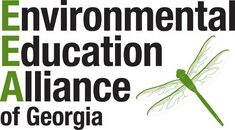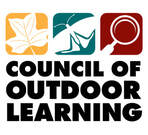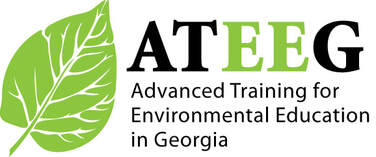Environmental Education Alliance of Georgia
- Our Story
- Our Team
- Our Events
-
Our Resources
- Wildlife Viewing
- Earth Month Activities
- Garden-based Learning
- EcoEngineering Challenges
- Community (Citizen) Science
- Phenomenon-Based Learning
- Problem-Based Learning
- Place-Based Learning
- Project-Based Learning
- Teaching about Climate Change
- Teaching about EJ
- Zero Waste Heroes
- SAGES Project
- Virtual EE Resources
- Environmental Clubs
- Evaluation and Assessment
-
Our Work
- Our News
- Our Impact
- JOIN or GIVE
- Member Portal
- Contact Us
- Outdoor Learning Store
- PassTick2023-4
- Annual Report
- New Page
- Past 2022 EEA Conference
- Past EEA Board 2021-22
- Past 2022 conferenceoverview
- Non-clickable Page
- New Page
- EEA Guest Blog
- Our Story
- Our Team
- Our Events
-
Our Resources
- Wildlife Viewing
- Earth Month Activities
- Garden-based Learning
- EcoEngineering Challenges
- Community (Citizen) Science
- Phenomenon-Based Learning
- Problem-Based Learning
- Place-Based Learning
- Project-Based Learning
- Teaching about Climate Change
- Teaching about EJ
- Zero Waste Heroes
- SAGES Project
- Virtual EE Resources
- Environmental Clubs
- Evaluation and Assessment
-
Our Work
- Our News
- Our Impact
- JOIN or GIVE
- Member Portal
- Contact Us
- Outdoor Learning Store
- PassTick2023-4
- Annual Report
- New Page
- Past 2022 EEA Conference
- Past EEA Board 2021-22
- Past 2022 conferenceoverview
- Non-clickable Page
- New Page
- EEA Guest Blog
EVALUATION AND ASSESSMENT
Research on Environmental and Outdoor Education
Translating Research into Practice
Research provides findings can be translated into models for effective environmental education and outdoor learning. But program evaluation and student assessments are necessary to understand whether the intended educational or environmental objectives are being met, and what can be done to improve outcomes. Here are some strategies, tools and resources to jump-start your evaluation efforts.
Evaluating the Effectiveness of EE ProgramsAs a teacher or as a non-formal environmental educator, it is important to know whether your teaching approach is effective. How to measure program effectiveness depends on intended outcomes. For instance, a program designed to increase student engagement in nature would be evaluated differently from a program intended to hone student skills in solving environmental problems.
Check out the free NAAEE online course on Research and Evaluation and explore the University of Michigan's MEERA toolbox containing free instruments for evaluating environmental education programs. |
Assessing Students' Connection to Nature
|
Many non-formal environmental education and outdoor learning programs are intended to expose students to nature, overcome their fears, and inspire a sense of wonder, curiosity and adventure as students explore the natural world. But how can the connection one feels to nature be assessed, to determine whether a program is successful? A workshop, practitioner guide, and free assessment tools for this purpose have been created by Gabby Salazar, Kristen Kunkle, and Martha C. Monroe with support from NAAEE, Children and Nature Network, and Pisces Foundation. See white buttons at right.
Some older, traditional nature connectedness tools used in the UK and the US are referenced in the articles below (black buttons). |
Assessing Students' Academic Gains
|
Educators use formative assessments to get an idea of what students have learned and what misconceptions they may harbor, so teaching can be adjusted on the fly and students can focus on re-learning any concepts they do not yet understand. Formative assessments typically take place before or in the midst of teaching, so they can provide insight for the educator (and the learner).
Summative assessments are intended to determine a student's level of knowledge and proficiency (how they can apply knowledge of a concept by using science and engineering practices and explain the concept in he context of crosscutting concepts). Summative assessments include tests or performance tasks that provide an opportunity to demonstrate and apply knowledge. When outside evaluators (not students' own teachers) evaluate students, they may be required to submit a proposal and get approval from the school's IRB in order to protect student privacy and to ensure ethical processes. |
Assessing Changes in Student Attitudes, Behaviors, and Self-Efficacy
|
As a result of environmental education, it is often assumed that student attitudes and behaviors regarding the environment will change, and that their self-efficacy (or confidence that they can make a difference in the world) will improve. But some research indicates that learning about environmental problems can increase "eco-anxiety" and have an adverse effect on student adoption of pro-environmental attitudes or behaviors. The articles on the right provide some insight into fostering change and how to measure student outcomes.
|
EEA Evaluation Workshops, Courses and Technical Assistance
|
Every year, EEA's ATEEG Certification program offers Core Course 3 on Evaluation as a three day in-person or hybrid course (one day in person + self-paced online modules). This course is taught by EEA partners and UGA professors Dr. Kris Irwin and Dr. Nick Fuhrman. In addition, the Independent Project required for ATEEG certification incorporates evaluation as a major focus. There are also occasional sessions for participants to collaborate on their Independent Project plans. Click the ATEEG button to learn about any upcoming Evaluation courses.
EEA periodically hosts workshops on program evaluation. Among recent offerings were:
|
|
Environmental Education Alliance, Inc.
P.O. Box 801066 | Acworth, GA 30101 EEA does not does not discriminate on the basis of race, color, national origin, sex, age, or disability in its program , activities, or employment. For more information on EEA's non-discrimination commitment click here . Grievance officer may be contacted at [email protected] |
Proudly powered by Weebly
|




